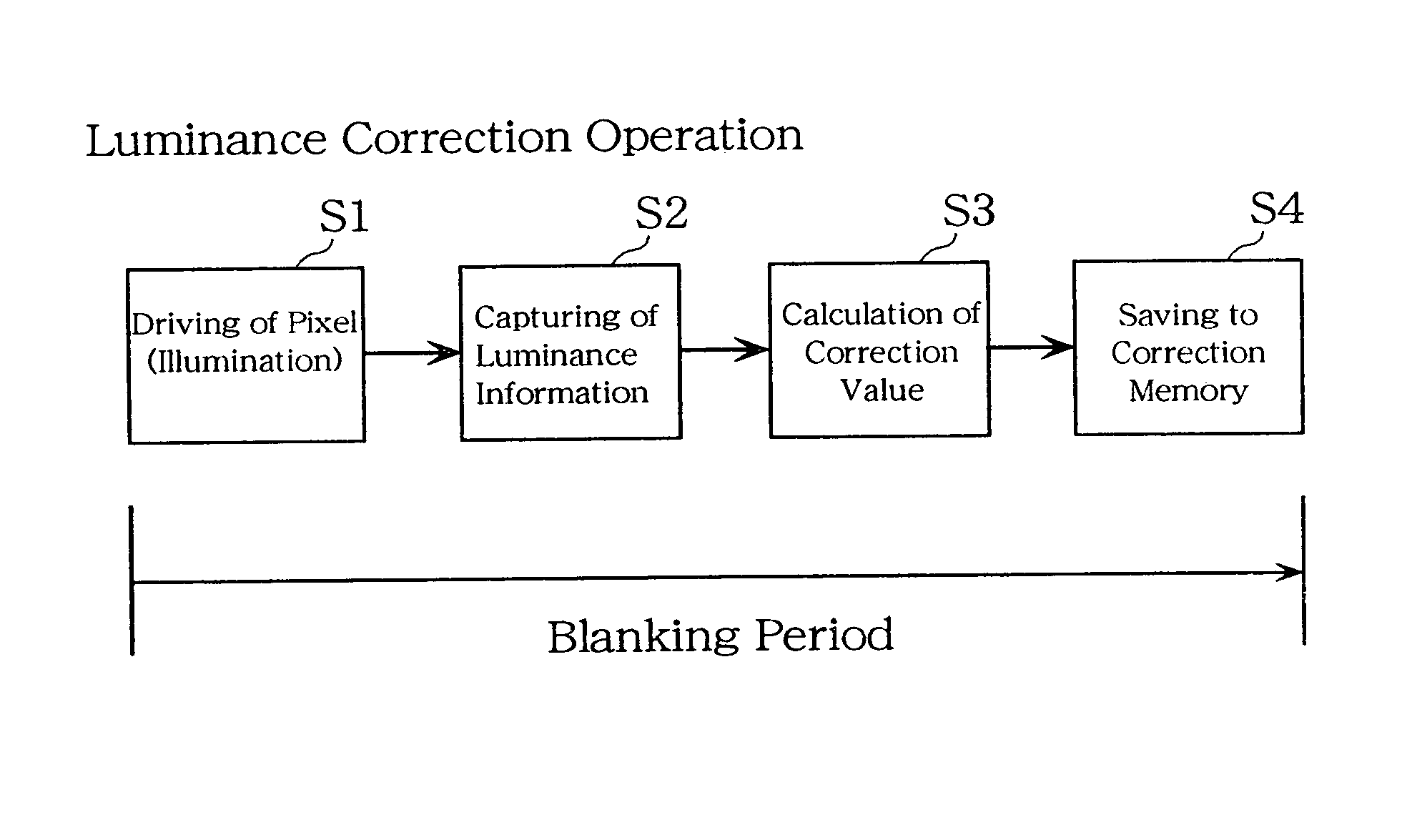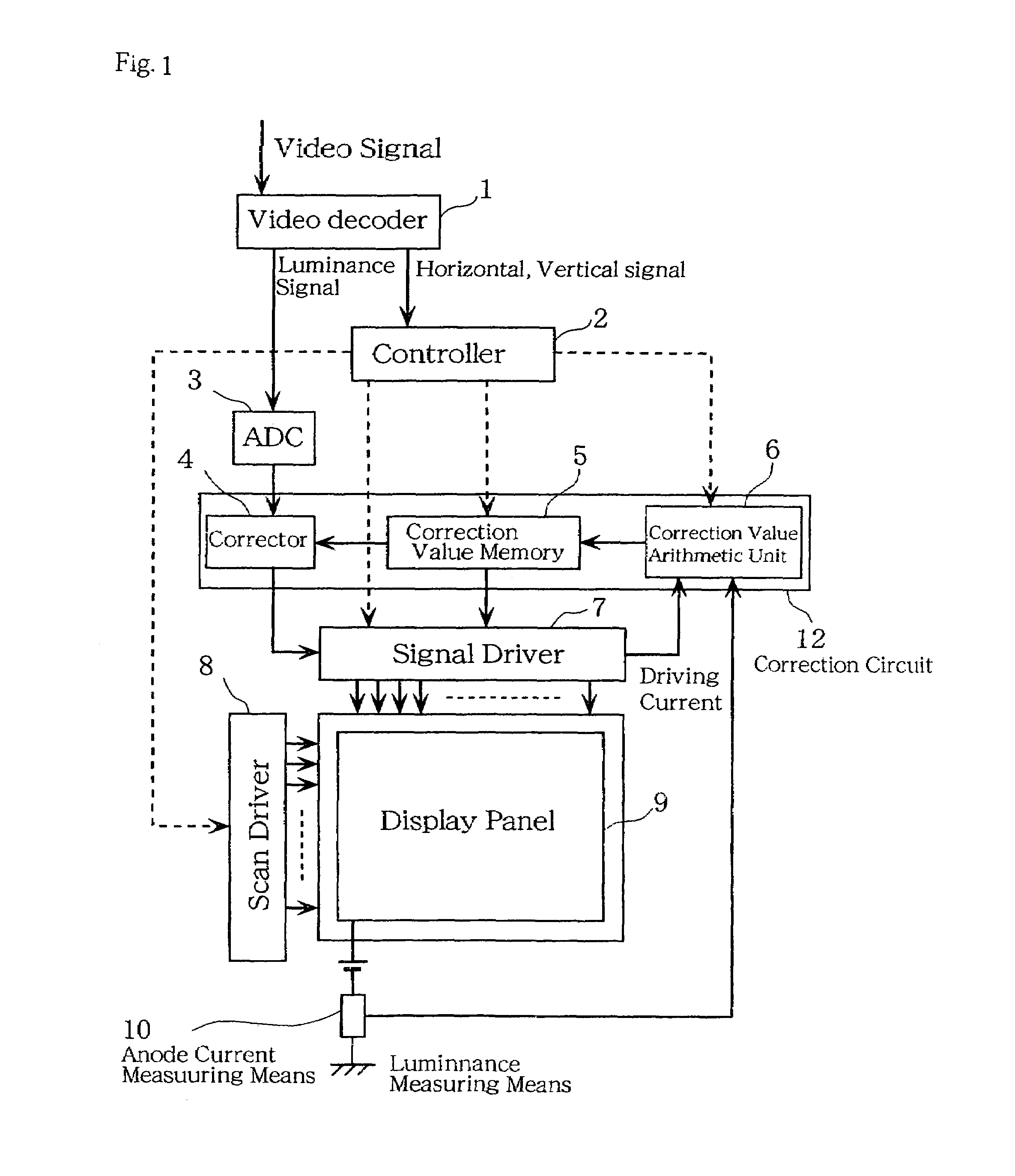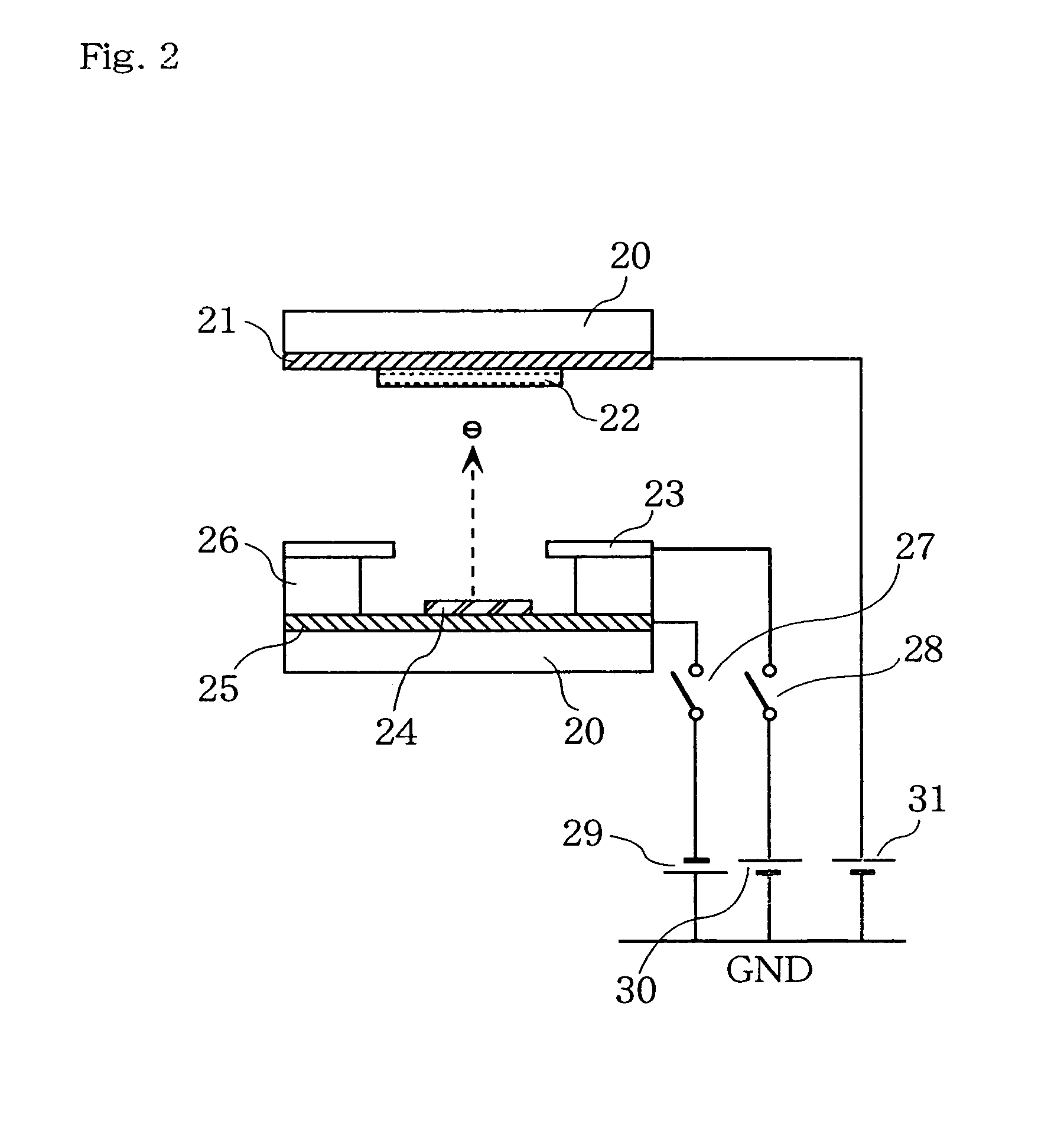Method of driving display panel, luminance correction device for display panel, and driving device for display panel
a technology of luminance correction and display panel, which is applied in the direction of instruments, static indicating devices, etc., can solve the problems of extremely challenging high-speed operation of signal drivers, and the unit of an lsb, so as to eliminate the interruption of video display during use, high gray scale resolution, and high quality
- Summary
- Abstract
- Description
- Claims
- Application Information
AI Technical Summary
Benefits of technology
Problems solved by technology
Method used
Image
Examples
embodiment 1
Basic Driving Operation of the Present Invention
[0112]The operational principle of the present invention is shown in FIG. 1 and is described with reference to the figure.
[0113]Reference numeral 9 denotes a display panel in which numerous, for example, electron-emitting elements are arranged in rows and columns. Display panel electrodes for data input and display panel electrodes for scan signal input are each connected to a driver. Reference numeral 8 denotes a scan driver that sequentially scans, one row at a time, the panel wired in rows and columns. For example, in the scan driver, there is a switching circuit for each row, and the scan driver has a function such that in accordance with the timing of the scanning, only a given selected row is connected to either a direct current voltage source Vy (not shown in figure) or 0 V, while other rows are connected to the other voltage value. Reference numeral 7 denotes a signal driver that applies modulated signals to control the emittin...
embodiment 2
[0212]Embodiment 2 describes another example of an operation for correction of change over time. A method of correcting luminance in accordance with the present embodiment 2 will be described with reference to FIG. 28. Consider a given blanking period (horizontal or vertical). A pixel is driven to illuminate, luminance information (for example, anode current) is captured, a correction value for driving is calculated, and this correction value is stored in the correction memory. This series of operations is carried out during a blanking period. Carrying out this operation during a blanking period makes luminance correction operation that does not affect video output possible. In addition, because the pixels are illuminated one at a time and for extremely short durations, this method is advantageous in that the user cannot perceive the emitting of light.
[0213]For example, suppose that this operation is carried out during an NTSC horizontal blanking period. If the element is capable of...
embodiment 3
[0217]Embodiment 3 describes another example of an operation for correction of change over time. A method of correcting luminance of the present embodiment 3 is shown in FIG. 29. Consider a given blanking period (horizontal or vertical). During this blanking period, operations of driving a pixel to illuminate and capturing luminance information (for example, anode current) only are carried out. This method, intended for cases of increased resolution and shortened blanking periods or the like, is such that only the minimum number of operations is carried out during a blanking period. As long as luminance information is captured during the blanking period, it is not a problem that the subsequent operations of correction calculation and memory storage overlap with the video signal operation or be carried out in parallel with the video signal operation.
[0218]In addition, it is possible to prepare a luminance information temporary storage memory (not shown in figure), to first carry out ...
PUM
 Login to View More
Login to View More Abstract
Description
Claims
Application Information
 Login to View More
Login to View More - R&D
- Intellectual Property
- Life Sciences
- Materials
- Tech Scout
- Unparalleled Data Quality
- Higher Quality Content
- 60% Fewer Hallucinations
Browse by: Latest US Patents, China's latest patents, Technical Efficacy Thesaurus, Application Domain, Technology Topic, Popular Technical Reports.
© 2025 PatSnap. All rights reserved.Legal|Privacy policy|Modern Slavery Act Transparency Statement|Sitemap|About US| Contact US: help@patsnap.com



